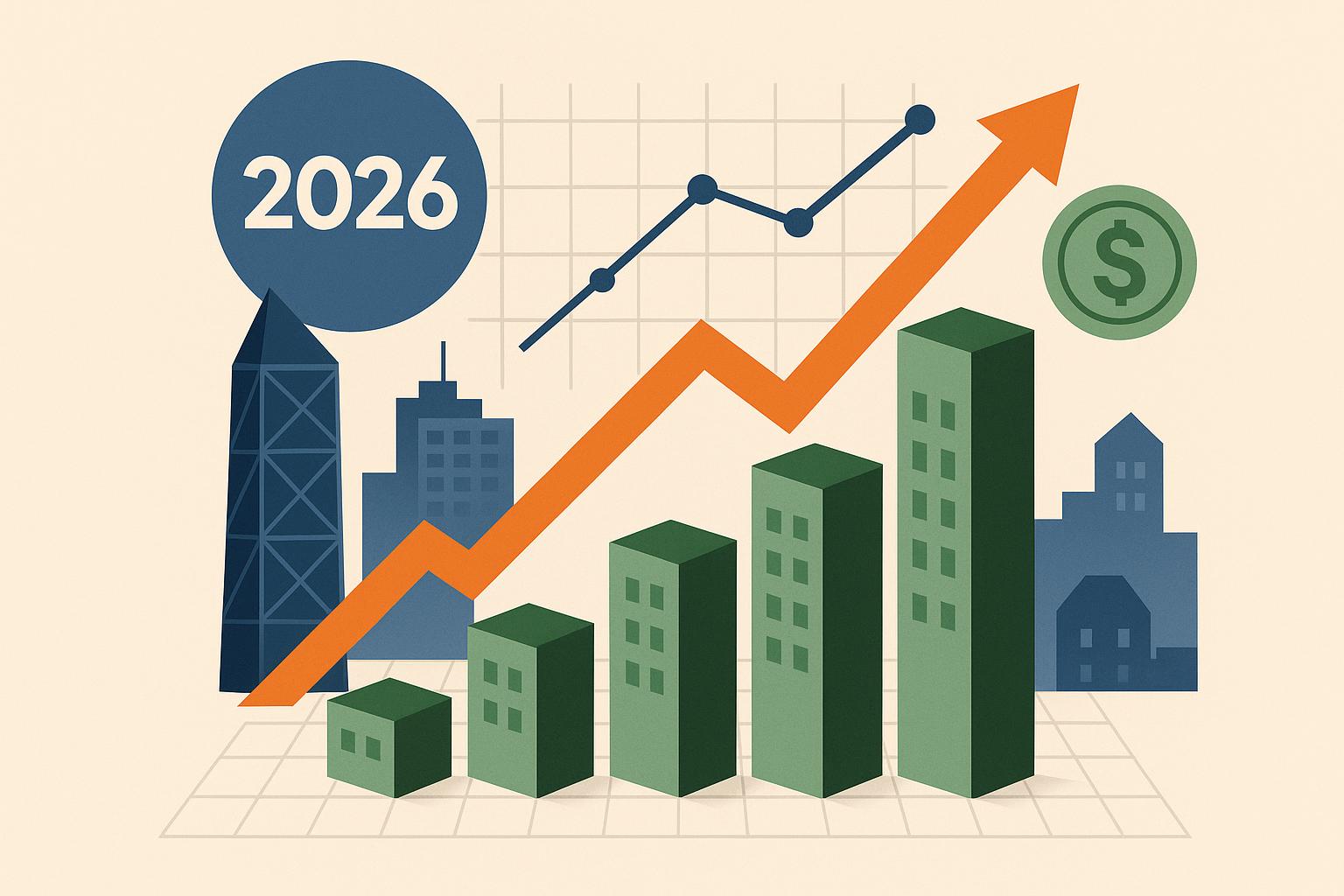2026 Investment Decisions To Consider in the New Year Ahead

With 2025 drawing to a close, investors look back on a year of mixed financial signals. The past year saw continued high interest rates and inflationary pressures, making borrowing more expensive, which is a true headwind for real estate and other leveraged investments. At the same time, there was finally some relief based on easing inflation and policymakers’ signals that interest rate hikes might finally pause or even reverse in the coming year.
Major legislation like the One Big Beautiful Bill Act of 2025 extended tax incentives and put money into infrastructure and manufacturing, a reason for optimism in such sectors as industrial real estate. Certain asset classes, however, had their ongoing challenges. For example, office buildings generally struggled with high vacancies.
According to industry veteran Ben Reinberg, the key themes of 2026 will center on a back-to-basics approach that emphasizes income, smart use of technology, and strategic positioning. “2025 killed the myth that rising values alone make you money; it proved that stable cash flow is what counts,” says Ben Reinberg, noting that investors are pivoting away from pure speculation and toward reliable returns.

In other words, “cash flow is king” in the current environment, a mantra likely to define investment decisions in the new year. Here are five major trends and opportunities that Reinberg predicts investors must take advantage of in 2026.
1. Focus on Yield Over Cap Rates
Next year, yield will drive valuations more than traditional cap rates. Rather than chasing ultra-low cap rate deals on the assumption of appreciation, investors will look at how much income a property generates relative to its cost. Deals that yield solid cash-on-cash returns will be prized, even if headline cap rates are higher because in a market seeking reliability, stable yield trumps speculative upside.
2. Embrace Tech-Enabled Transparency
By 2026, investors will be seeking more frequent, granular information about the performance of their assets. Sponsors and fund managers in real estate will be expected to deliver clear monthly financial reports and use artificial intelligence (AI) in underwriting to analyze deals more completely and at faster speeds.
3. Bet on Recession-Resilient Assets (Triple-Net & Medical)

Certain commercial real estate sectors will shine for their stability and consistent demand. Notably, triple-net lease (NNN) properties and medical office buildings are poised to outpace other asset classes in 2026. The properties in these asset classes have high occupancy and dependable income even during choppy economic times. These “all-weather” asset types are increasingly finding favor with investors as a safe harbor for reliable returns.
4. Look to Secondary Markets for Growth
In the coming year, expect secondary and tertiary markets to boom as the manufacturing base of the United States expands domestically. The reshoring trend is making smaller cities and regional hubs so attractive that they have become targets for high-priority investments. Investors who had previously focused only on the coastal gateway cities would do well to take a long look at emerging secondary markets with high job growth and infrastructure investment that drive up real estate values and rents.
5. Prioritize Simplicity, Scale and Strong Structures
In 2026, investors will prefer simple deals with sound fundamentals to intricate speculative deals. Such an outlook will mean that larger-scale projects with proven demand, supported by sound deal structures, attract more capital than “flashy” high-risk deals. In essence, smart money is ditching the gamble for the sure thing, focusing on scaled investments that offer steady cash flow and structuring deals in a conservative manner to protect against downside.
Where Smart Capital Will Win in 2026

The 2025 market trends emphasized the significance of income and resiliency, and they still matter in 2026. Investors can position themselves for success through yield, making use of technology to understand assets, focus on durable classes of assets, expand to growth markets and structure deals for durability better.
As Reinberg’s outlook suggests, the winners in 2026 will be those who plan for income, stay agile and capitalize on the shifting landscape, turning the page to a new year of smart investment decisions.




